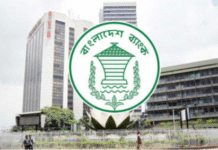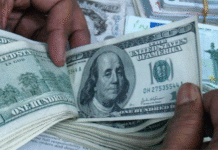The slowdown in Asian economies will likely persist for the rest of this year as weak global growth and reforms under way in many countries hinder activity, Reuters polls showed on Thursday.
But next year promises to be better, with most of the region’s economies expected to grow at a faster pace on the back of a US recovery.
Estimates for 2013 GDP growth were either cut or left unchanged for nine countries in the latest poll of over 250 economists conducted Oct 18-23, with India, Malaysia and Taiwan bearing the brunt of the downgrades.
Growth in China and India, the two regional powerhouses, will likely languish at multi-year lows.
China’s economy is set to grow 7.6 percent in 2013, beating the government’s 7.5 percent target, before losing some steam next year as the government forges ahead with structural reforms aimed at deriving more growth out of domestic consumption instead of exports.
“Chinese growth has been mainly driven by heavy industry and stands in contrast to the principles recently expounded by the country’s leadership: that a lower rate of GDP growth can be tolerated to ensure better quality growth in the future,” said Zhiwei Zhang, economist at Nomura in Hong Kong.
Supplying developed countries with everything from consumer and electronic goods to clothes and technology equipment, Asia’s export-focused economies have been hit by a prolonged slowdown in their main markets.
Reuters polls last week showed growth in the US and euro zone, Asia’s largest export markets, is unlikely to pick up to a robust pace anytime soon.
Concerns over how Washington will negotiate its fiscal troubles and uncertainty over the timing of an exit from the Federal Reserve’s stimulus programme will also likely weigh on Asian growth.
Since mid-May, when the Fed announced its intention to taper its $85 billion a month bond purchases, emerging Asian currencies have been hammered by investors who dumped risky assets in favour of the safe-haven US dollar.
The massive outflows from the region threw into stark relief Asian countries’ reliance on the greenback to finance trade.
The Indian rupee and Indonesian rupiah, the two most vulnerable currencies due to large current account deficits, lost 14 percent and 16 percent respectively between May to September.
But HSBC economist Frederic Neumann says those risks have subsided.
“With tapering on hold, and local defences beefed up, markets are breathing easier. An eventual taper might not do equal damage.”
The poll showed most countries will manage to keep their current account balance-to-GDP ratios in check this year and next.
WORST PROBABLY NOT OVER FOR INDIA
The Indian economy will likely post its weakest growth since the turn of the century this fiscal year as uncertainty ahead of elections next year keeps investors away, denting sentiment and demand in the economy. <ECILT/IN>
The median estimate of 4.7 percent growth in FY 2013/14 marked the sixth consecutive downgrade in the poll and highlights how the country that once boasted of near double-digit growth rates has slowly lost ground.
“Unfortunately, we believe the slowdown has further to go, which presents additional challenges for policymakers as they try to anchor inflation, stabilise the currency, and bring about a recovery in growth,” Neumann said.
Indian wholesale inflation in expected to average 6.0 percent in this fiscal year and next, higher than the Reserve Bank of India’s perceived comfort zone of 5 percent.
Economists in the poll have pencilled in another hike in the repo rate to 7.75 percent.
Except for 25 basis point hikes in the Indian and Indonesian interest rates, all other central banks in the region are expected to keep rates on hold for the next six months.
In 2014, 10 of the 13 economies in the polls are expected to grow at a faster rate compared with this year, with Taiwan, Thailand, Singapore and South Korea expected to gain the most.
Source: bdnews24










